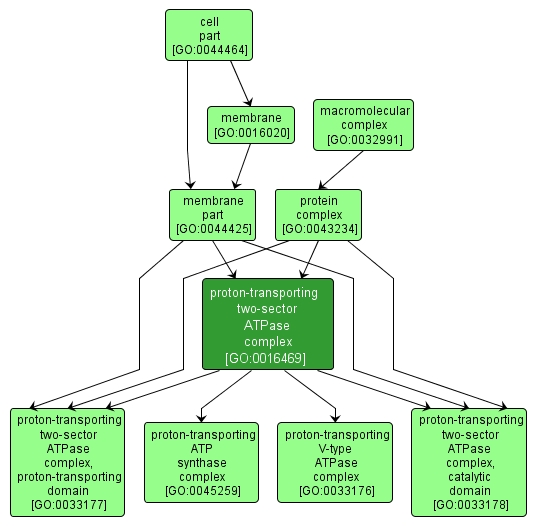| Desc: |
A large protein complex that catalyzes the synthesis or hydrolysis of ATP by a rotational mechanism, coupled to the transport of protons across a membrane. The complex comprises a membrane sector (F0, V0, or A0) that carries out proton transport and a cytoplasmic compartment sector (F1, V1, or A1) that catalyzes ATP synthesis or hydrolysis. Two major types have been characterized: V-type ATPases couple ATP hydrolysis to the transport of protons across a concentration gradient, whereas F-type ATPases, also known as ATP synthases, normally run in the reverse direction to utilize energy from a proton concentration or electrochemical gradient to synthesize ATP. A third type, A-type ATPases have been found in archaea, and are closely related to eukaryotic V-type ATPases but are reversible. |














